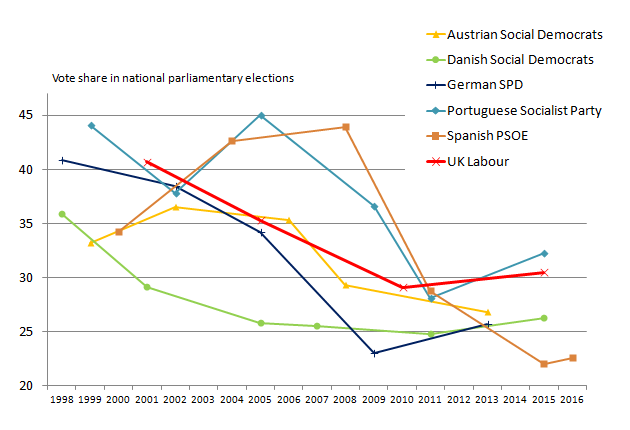Projection of Tory victory narrows to 13-16pts as Corbyn’s ratings improve
Posted in Historical polls, Politics on May 18th, 2017 by Leo – Comments Off on Projection of Tory victory narrows to 13-16pts as Corbyn’s ratings improveI recently published analysis that showed leadership ratings are an excellent predictor of election results and used Ipsos MORI’s April poll to project a Tory win of 15-18pts. Their May poll has now been published and, with Corbyn’s ratings having improved and May’s remaining unchanged, that projection has narrowed to 13-16pts.
My analysis is based on a relationship that Matt Singh spotted in his celebrated 2015 pre-election article. As with my last article, this post doesn’t go into as much depth as Matt did – if he repeats the analysis he did last time, as he’s suggested he will, his projection will be more thorough than mine.
Nevertheless, the comparative leadership ratings in MORI’s last polls have a very strong relationship with the final gap between the parties at the election, so this is a useful guide.
With the new data, I’m looking – as before – at both the difference in satisfaction with May and Corbyn, and the difference in net satisfaction, ie also taking into account those who are dissatisfied.
Graphs are below, but the headline is: on the gap in satisfaction the Tories are projected to win by 13pts, and on the gap in net satisfaction they’re projected to win by 15pts.
With a linear regression (rather than polynomial) this increases to 14pts and 16pts, so the range is 13-16pts (this is Great Britain only, though that doesn’t make much difference to the gap).
This means the Tories are on course for a win that’s about as large as the one in 1983 – less than it seemed a few weeks ago, but still historically large.
It seems surprising that the projected gap has narrowed by two points when the correlation was very good both for the previous analysis and for this one. I initially thought it might be that views of Corbyn were relatively unsettled compared to past elections as he’d been leader for a fairly short time when the election was called – so the swing towards him might have been unusually large. But actually the change in his satisfaction over this period is only around median – he’s gained less in terms of relative satisfaction, since the last poll, than the swing towards Howard in 2005, Blair in 1997 and Kinnock in 1992. The answer may just be that the ‘model’ is quite sensitive and is moved by a change of a few points in satisfaction, but still leaves an overlap around 15-16pts.
So, regardless of the reason – and despite Corbyn’s slightly improved satisfaction score – the projection still points to the largest win by any party for at least 34 years.












